
The roar of a classic muscle car engine, the smell of burnt rubber, and the thrill of raw, unadulterated power – these are the hallmarks of an era that continues to captivate automotive enthusiasts worldwide. Within this golden age of high-performance American vehicles, two names often emerge from the Ford Motor Company’s stable: Ford and Mercury. While undeniably sharing a familial bond under the same manufacturer, these two brands, despite their common ancestry, developed distinct identities and approaches, particularly evident in their legendary muscle car offerings.
For decades, both Ford and Mercury presented vehicles that stirred the souls of car lovers, from the everyday commuter to the most dedicated performance aficionado. However, a deeper dive beyond the shared components and engineering prowess reveals significant differences that fundamentally shaped their legacy, market appeal, and ultimately, their unique places in automotive history. These distinctions were not just superficial details; they represented core philosophies that dictated everything from initial price tags to production numbers, profoundly influencing how each brand’s muscle cars were perceived, acquired, and experienced by the American public.
Today, as we embark on an in-depth exploration of these crucial differences, we aim to uncover the core variations that truly set Ford and Mercury classic muscle cars apart. This journey will provide a nuanced perspective for anyone passionate about American automotive heritage and the storied “Horsepower Wars,” highlighting why these two seemingly similar marques ultimately appealed to vastly different segments of the car-buying public. Prepare to discover the intricate details that made one a mass-market hero and the other a more exclusive, luxury-tinged beast, each leaving an indelible mark on the golden age of muscle.
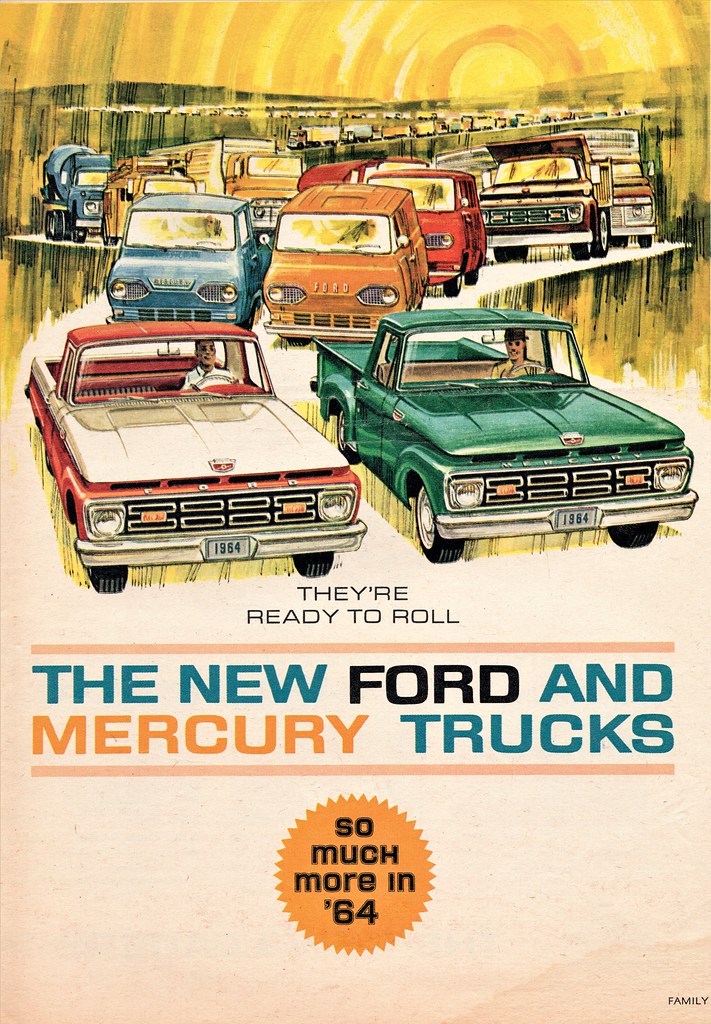
1. **Brand Image and Market Positioning**: At the very heart of the Ford and Mercury distinction lay their fundamentally different brand images and the specific market segments they were meticulously designed to capture. Ford, as the formidable parent company, consistently focused its efforts on attracting lower to middle-income buyers, establishing itself as the quintessential purveyor of reliable and affordable transportation. Its vehicles, including its formidable muscle car offerings, were primarily conceived and marketed as robust, practical, and highly accessible “everyday cars” that intentionally avoided any overtly high-status attachments. They were engineered for the widespread American populace, embodying a spirit of broad accessibility and utilitarian prowess that resonated deeply with a significant portion of the car-buying public, making a Ford muscle car a powerful statement without being an exclusive one.
In stark contrast, Mercury was deliberately positioned as a mid-luxury nameplate, a strategic move by Ford Motor Company to cater to a more affluent customer base seeking a step up in prestige and features. Mercury muscle cars, while often sharing vital underpinnings and powertrains with their Ford counterparts, were imbued with an undeniable aura of exclusivity and a distinct touch of sophistication. This cultivated image ensured that they were far more popular among members of America’s upper class, who desired a compelling blend of raw performance and refined prestige. The Mercury Cougar Eliminator, for instance, with its high-performance 428 Super Cobra Jet V-8, was not merely a fast car; it was a statement of discerning taste, offering a more upscale alternative to the raw power of a Mustang, establishing a unique identity even within the fiercely competitive muscle car segment.
This profound difference in brand image meant that even when a Ford and a Mercury shared numerous components and came from the same production lines, a Mercury would inherently be “treated with more importance.” It wasn’t solely about the brute force under the hood; it was intrinsically about the statement a Mercury made, elevating it beyond the often-utilitarian perception of many Ford models. This strategic positioning allowed Mercury to carve out a niche for itself, appealing to those who sought not just speed and power, but also a certain measure of status and an enhanced sense of luxury attached to their high-performance vehicle, creating a distinct experience for its discerning clientele.
Car Model Information: 2022 Hyundai SANTA FE Limited
Sigfig: 1
Adj: on
Sp: overhead valve,Oldsmobile V8 engine#303
Categories: 1966 neologisms, All accuracy disputes, All articles needing additional references, All articles with unsourced statements, Articles needing additional references from May 2025
Summary: A muscle car is an American-made two-door sports coupe with a powerful engine, marketed for its performance.
In 1949, General Motors introduced its 88 with the company’s 303-cubic-inch (5 L) OHV Rocket V8 engine, which was previously available only in its luxury Oldsmobile 98. This formula of putting a maker’s largest, most powerful engine in a smaller, lighter, more affordable vehicle evolved into the “muscle car” category. Chrysler and Ford quickly followed suit with the Chrysler Saratoga and the Lincoln Capri.
The term “muscle car”, which appeared in the mid-1960s, was originally applied to “performance”-oriented street cars produced to fill a newly recognized niche; it entered the general vocabulary through car magazines and automobile marketing and advertising. By the early 1970s, muscle cars included special editions of mass-production cars designed for street and track drag racing. The concept of high performance at lower prices was exemplified by the 1968 Plymouth Road Runner and companion Dodge Super Bee, whose powerful engines drove relatively basic-trimmed intermediate-sized cars that were meant to undercut more expensive, more stylish, and better-appointed models from General Motors and Ford that had come to define the market, such as the Pontiac GTO (1964), 396 Chevrolet Chevelle (1965), 400 Buick Gran Sport (1965), 400 Oldsmobile 442 (1965), as well as the 427 Mercury Comet Cyclone (1964) and 390 Mercury Cyclone (1966).
By some definitions – including those used by Car and Driver, CNBC, Road & Track, and Motor Trend – pony cars such as the Ford Mustang, Chevrolet Camaro, Plymouth Barracuda, Pontiac Firebird, AMC Javelin, and their luxury companions in that large, influential, and lucrative 1960s–70s niche, the Mercury Cougar and Dodge Challenger, could also qualify as “muscle cars” if outfitted with suitable high-performance equipment.
Get more information about: Muscle car
Buying a high-performing used car >>>
Brand: Ford Model: muscle car
Price: $28,719 Mileage: 32,552 mi.
Read more about: Beyond the Hype: Dissecting EV Battery Longevity and Performance in the Real World
2. **Purchase Price and Luxury Inclusions**: Following directly from their divergent brand positioning, it is entirely unsurprising that Mercury vehicles, including their muscle car iterations, consistently commanded a higher price tag compared to their Ford siblings. While both brands frequently utilized shared platforms, engines, and core mechanical components, Mercury models actively differentiated themselves through the deliberate integration of “additional features designed to increase the comfort of owners.” These highly desirable creature comforts, ranging from more premium interior materials and refined finishes to enhanced amenities and often more advanced technological inclusions for their time, inevitably inflated both production and installation costs, which were then passed on to the consumer.
For example, to illustrate this consistent pricing disparity, a new 2010 Mercury Grand Marquis was priced at $29,525, representing a significant premium of $4,000 more than a same-year Ford Taurus, which came in at $25,170. The Grand Marquis justified this higher price point with a suite of upscale inclusions such as “electrochromic mirrors, leather-covered steering wheels, and climate control,” features that underscored its luxury aspirations. Similarly, a base-model 2009 Mercury Grand Mariner was listed at $22,650, while its Ford Escape counterpart offered a more budget-friendly option at $20,345, with the Grand Mariner notably boasting a “panoramic sunroof and leather seats” that were conspicuously absent on the more practical Escape.
Even in instances where the Mercury Milan was, in essence, a mere re-badged Ford Fusion, it still managed to command a higher retail price, with the Milan costing $20,320 compared to the Fusion’s more accessible $19,035. This unwavering pricing strategy emphatically underscored Mercury’s premium market positioning. For muscle car enthusiasts of the era, this meant that opting for a Mercury muscle car, such as the 1970 Mercury Cyclone Spoiler, would entail a greater financial investment, but in return, they would receive a vehicle imbued with additional touches of refinement and luxury that distinctly set it apart from a more raw, purely performance-focused Ford offering like the Torino Cobra. The Mercury sought to offer a more encompassing, comfortable, and upscale high-performance driving experience, reflective of its higher price point.
Read more about: Inside Bill Gates’ Garage: Unveiling the Tech Titan’s Private Car Collection for 2025
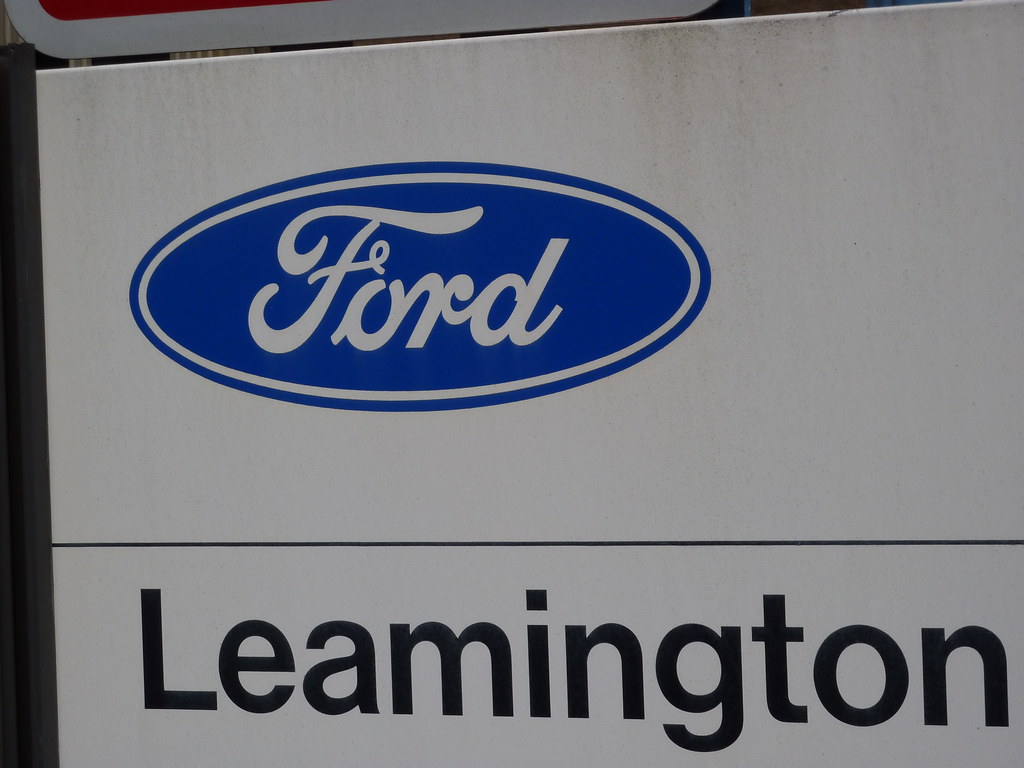
3. **Production and Sales Volume**: The distinct market strategies employed by Ford and Mercury inevitably led to vastly different production and sales volumes, a critical factor that continues to significantly influence the rarity, desirability, and collectibility of their respective classic muscle cars in today’s enthusiast market. Ford, with its unwavering commitment to serving the mass market, produced and sold its models in truly enormous quantities. These were vehicles meticulously designed for widespread availability, ensuring that a Ford model, whether it was a family sedan or a potent muscle car like the Mustang Mach 1, was a common and familiar sight on American roads, integrated into the fabric of everyday life.
Mercury, conversely, adhered closely to the typical production patterns of luxury or mid-luxury brands, which, as the context states, “are usually produced and sold in small numbers because of their high price tags.” This inherent philosophy of exclusivity meant that Mercury models, including their potent muscle car variants, were almost always considerably rarer than their more ubiquitous Ford counterparts. This significant disparity is vividly illustrated by the sales figures from 2010, which marked Mercury’s final year of production. In that year, “Mercury’s annual sales totaled 93,915 units” across its entire lineup. This figure stands in stark contrast to Ford’s colossal sales, which reached “1,752,111 units” in the US during the very same period, demonstrating a dramatic difference in market penetration.
It’s also worth noting that even during what was considered “the height of Mercury’s dominance in the 50s and 60s, it never sold as many cars as Ford.” This persistent and fundamental difference in production volume has profound implications for the classic car market. It inherently means that locating a pristine Mercury muscle car, such as one of the mere 341 examples of the 1970 Mercury Cyclone Spoiler 429 SCJ or a 1970 Mercury Cougar Eliminator 428 Super Cobra Jet, is often a far more challenging and rewarding endeavor than finding a comparable Ford Mustang or Torino. This scarcity contributes significantly to their unique allure and premium value among serious collectors today, making them prized possessions for those seeking something truly distinctive from the muscle car era.
Car Model Information: 1966 Ford Mustang Base
Name: Ford Mustang
Caption: 2018 Ford Mustang GT 5.0
Aka: Ford T5 (Germany)
Manufacturer: Ford Motor Company
Production: March 1964 – present
ModelYears: 1965–present
Class: Unbulleted list
BodyStyle: Unbulleted list
Layout: Front-engine, rear-wheel-drive layout
Categories: 1970s cars, 1980s cars, 1990s cars, 2+2 coupés, 2000s cars
Summary: The Ford Mustang is a series of American automobiles manufactured by Ford. In continuous production since 1964, the Mustang is currently the longest-produced Ford car nameplate. Currently in its seventh generation, it is the fifth-best selling Ford car nameplate. The namesake of the “pony car” automobile segment, the Mustang was developed as a highly styled line of sporty coupes and convertibles derived from existing model lines, initially distinguished by “long hood, short deck” proportions.
Originally predicted to sell 100,000 vehicles yearly, the 1965 Mustang became the most successful vehicle launch since the 1927 Model A. Introduced on April 17, 1964 (16 days after the Plymouth Barracuda), over 400,000 units were sold in its first year; the one-millionth Mustang was sold within two years of its launch. In August 2018, Ford produced the 10-millionth Mustang; matching the first 1965 Mustang, the vehicle was a 2019 Wimbledon White convertible with a V8 engine.
The success of the Mustang launch led to multiple competitors from other American manufacturers, including the Chevrolet Camaro and Pontiac Firebird (1967), AMC Javelin (1968), and Dodge Challenger (1970). It also competed with the Plymouth Barracuda, which was launched around the same time. The Mustang also had an effect on designs of coupes worldwide, leading to the marketing of the Toyota Celica and Ford Capri in the United States (the latter, by Lincoln-Mercury). The Mercury Cougar was launched in 1967 as a unique-bodied higher-trim alternative to the Mustang; during the 1970s, it included more features and was marketed as a personal luxury car.
From 1965 until 2004, the Mustang shared chassis commonality with other Ford model lines, staying rear-wheel-drive throughout its production. From 1965 to 1973, the Mustang was derived from the 1960 Ford Falcon compact. From 1974 until 1978, the Mustang (denoted Mustang II) was a longer-wheelbase version of the Ford Pinto. From 1979 until 2004, the Mustang shared its Fox platform chassis with 14 other Ford vehicles (becoming the final one to use the Fox architecture). Since 2005, Ford has produced two generations of the Mustang, each using a distinct platform unique to the model line.
Through its production, multiple nameplates have been associated with the Ford Mustang series, including GT, Mach 1, Boss 302/429, Cobra (separate from Shelby Cobra), and Bullitt, along with “5.0” fender badging (denoting 4.9 L OHV or 5.0 L DOHC V8 engines).
Get more information about: Ford Mustang
Buying a high-performing used car >>>
Brand: Ford Model: Mustang
Price: $32,991 Mileage: 98,811 mi.
Read more about: Beyond the Hype: Dissecting EV Battery Longevity and Performance in the Real World
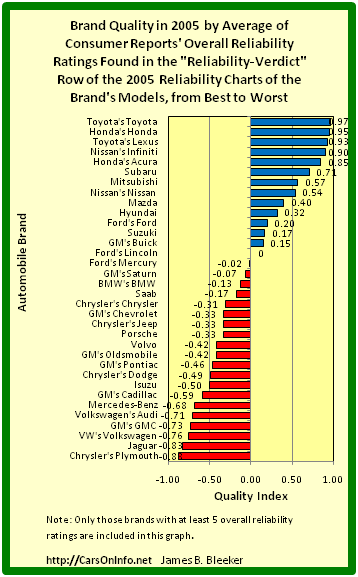
4. **Overall Reliability Ratings**: When considering the crucial and often debated aspect of overall reliability, a consistent pattern emerges, firmly positioning Ford as the more dependably robust and trustworthy brand over its Mercury sibling. While both Ford and Mercury have, like most automotive manufacturers, encountered their fair share of mechanical and design issues throughout their long histories, the underlying design philosophy behind each brand often proved to be a decisive factor in their long-term performance and owner satisfaction. Ford vehicles, primarily conceived and marketed as “practical cars,” generally incorporated only “essential components.” This streamlined approach, as popular knowledge dictates, tends to correlate directly with fewer potential points of failure and a more straightforward operational lifespan, making them appealing to those who prioritized dependable functionality.
In contrast, Mercury cars, with their distinct emphasis on luxury, enhanced comfort, and added convenience, integrated a greater number of “additional features aimed at increasing the comfort of passengers.” While undeniably enhancing the driving and passenger experience, this increased proliferation of parts and complex systems inherently introduced “higher chances of something breaking down,” creating more opportunities for mechanical or electrical glitches. This distinction is not merely anecdotal but is substantiated by reliability ratings from independent organizations. For instance, the Ford Explorer received a respectable 3/5 reliability rating from JD Power, while its Mercury Mountaineer counterpart unfortunately garnered a “dismal 2/5 Reliability Rating,” indicating a noticeable difference in perceived quality and endurance.
Further comprehensive comparisons across various models consistently reinforce this trend of Ford’s superior reliability. The Ford Escape earned a solid 3/5 rating against the Mercury Mariner’s lower 2/5, and perhaps most tellingly, the Ford Fusion achieved a “perfect 5/5 Reliability Rating,” while its mechanically similar, yet re-badged, Mercury Milan sibling only managed a 4/5. Based on these historical comparisons and expert assessments, it is abundantly clear that Ford has generally proven to be the more reliable of the two manufacturers. For muscle car enthusiasts and collectors, this historical data suggests that a Ford muscle car, such as a Mustang Boss 429 or a Torino Cobra, might historically represent a more robust, enduring, and potentially less problematic ownership experience in the long run, offering a greater peace of mind for those investing in automotive history.
Read more about: Beyond the Black Badge: The Unseen Shift as Exclusive Cars Embrace Younger Buyers

5. **Maintenance and Repair Costs**: The inherent differences in engineering complexity, the inclusion of luxury features, and their respective target markets also directly translated into varying costs for repair and maintenance over the entire lifespan of these classic vehicles. As a general rule, Ford vehicles consistently proved to be less expensive to maintain compared to Mercury vehicles, representing a tangible financial advantage for Ford owners. This ongoing cost-effectiveness for Ford is a direct consequence of Mercury’s “luxury vehicle status,” which, as the context explains, frequently involved “extra parts, increasing the likelihood of something failing and requiring repair.” The more sophisticated and feature-rich a vehicle, the more components there are that could potentially malfunction or simply require routine servicing.
While the year-to-year differences in routine maintenance costs might not always appear significantly large on an individual service invoice, “the extra dollars can add up quickly over the years,” accumulating into a noticeable financial disparity over the long term. To illustrate this, the annual service cost for a Ford Fusion was recorded at $418, which, while not dramatically lower, was indeed less than its Mercury Milan equivalent. Similarly, the Mercury Grand Marquis typically incurred higher average maintenance costs at $579 per year compared to the more economical Ford Taurus at $570. These figures, though sometimes appearing close on paper, consistently indicate a lean towards Ford being the more budget-friendly option for long-term ownership.
It is, however, important to acknowledge that exceptions to this general rule did exist, demonstrating the complexities of automotive maintenance. The context specifically highlights an instance where the Ford Escape’s annual maintenance cost, at $594, could occasionally eclipse that of the Mercury Grand Mariner, which came in at $480. Despite these occasional anomalies and specific model variations, the overarching trend and expert judgment firmly position Ford as the “more ‘affordable-to-own’ model” of the two brands. For dedicated owners and restorers of classic muscle cars, this implies that maintaining a Ford muscle car, like a powerful 1970 Ford Mustang Mach 1 or a resilient 1970 Ford Torino Cobra, could potentially be a more financially manageable endeavor compared to keeping a Mercury muscle car, such as a Cyclone or Cougar Eliminator, in pristine, road-ready condition. This consideration is often a significant factor for enthusiasts when choosing which piece of automotive history to cherish and preserve.
Read more about: Stop Falling for These 19 Car Myths: Essential Facts for Drivers
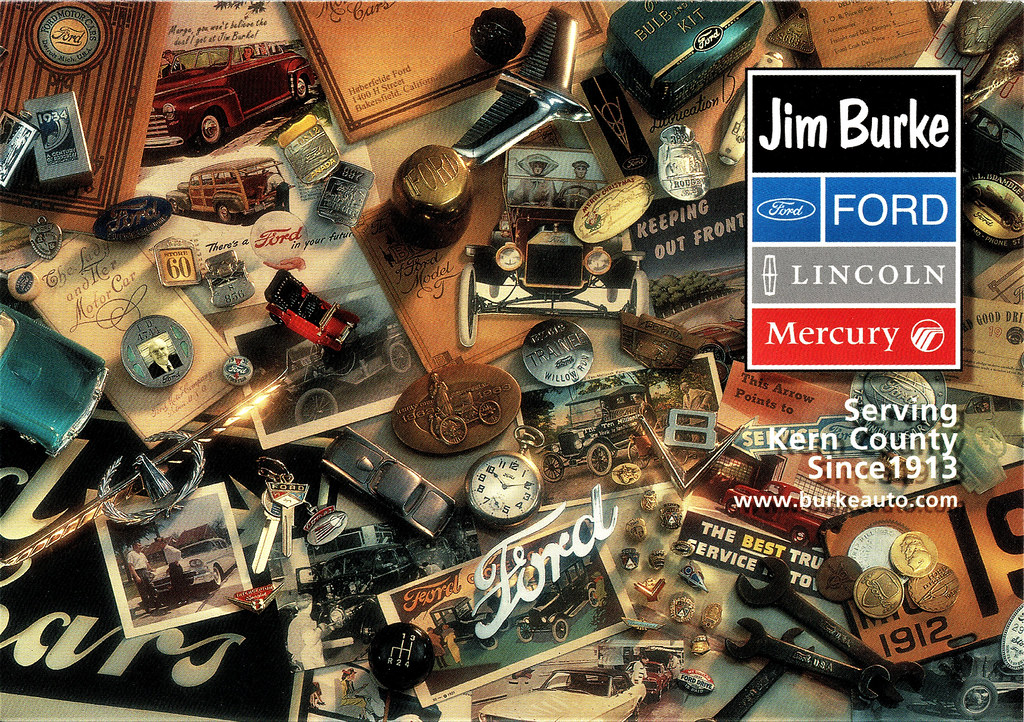
6. **Shared Engineering vs. Distinctive Features**: While Ford and Mercury operated under the same corporate umbrella, Ford Motor Company, the notion that they were simply re-badged versions of each other is an oversimplification. It is true that, as they hailed from the same parent company, Ford and Mercury models “inevitably shared some components and features.” This common ancestry meant that many vital underpinnings, including chassis, platforms, and even fundamental powertrain elements, were often shared between the two marques, particularly in the competitive muscle car segment. This engineering synergy allowed for cost efficiencies and a degree of inherent performance parity.
However, the crucial distinction lay in how each brand leveraged or augmented these shared foundations to carve out its unique identity. Mercury, with its deliberate positioning as a mid-luxury nameplate, consistently integrated “additional features designed to increase the comfort of owners.” These weren’t superficial changes; they included a suite of enhancements such as more opulent interior materials, refined trim, and advanced amenities that were often optional or unavailable on their Ford counterparts. This meticulous addition of creature comforts was a cornerstone of Mercury’s strategy, creating a distinctly more upscale driving and ownership experience.
Even when equipped with the same potent engines and robust drivelines as a Ford, a Mercury muscle car offered a different kind of allure. It was the subtle yet significant touches—the electrochromic mirrors, the leather-covered steering wheels, the climate control systems, or even a panoramic sunroof and leather seats in their SUV equivalents—that fundamentally distinguished a Mercury. These inclusions not only justified its higher price point but also ensured that a Mercury, even in its most aggressive muscle car form like the Cougar Eliminator, exuded an air of refined exclusivity that set it apart from the more utilitarian, albeit equally powerful, Ford offerings.
Read more about: Beyond the Hype: Dissecting EV Battery Longevity and Performance in the Real World
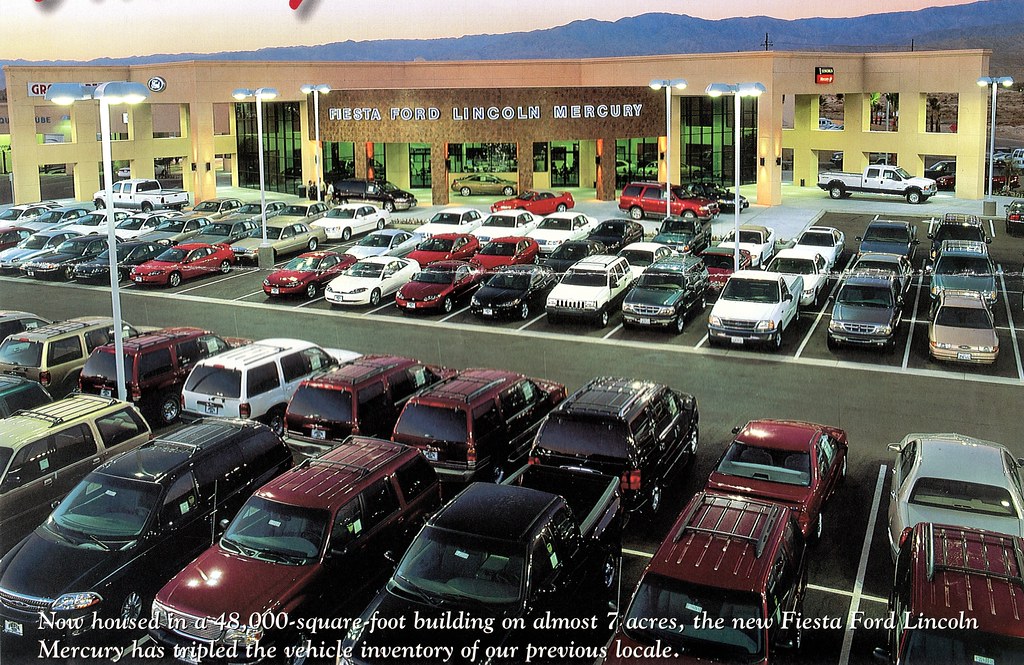
7. **Performance Parity**: When enthusiasts delve into the performance capabilities of classic Ford and Mercury muscle cars, a fascinating aspect often comes to light: despite their differing market positions and price points, there was frequently a notable degree of performance parity between comparable models. The context explicitly states that “both brands have several vehicles in their respective lineups,” making a broad, sweeping comparison challenging. Yet, the underlying truth is that “models from each brand share many components, including powertrains and drive trains.” This shared engineering was a critical factor in ensuring that raw power output and acceleration figures were often strikingly similar.
This commonality in core mechanicals meant that the heart of many Mercury muscle cars beat with the same ferocity as their Ford siblings. Whether it was a robust V8 engine or a carefully engineered suspension setup, the fundamental building blocks of performance were frequently identical. Consequently, any “minor differences in certain cases” in performance were often attributable to factors like vehicle weight due to luxury inclusions, or subtle tuning variations, rather than a fundamental disparity in engine capability or drivetrain efficiency. The intention was for Mercury to offer a more luxurious *experience* of power, not necessarily more power itself.
A compelling example that underscores this performance parity is the comparison between the Ford Escape and the Mercury Grand Mariner. While the Grand Mariner commanded a higher price, reflecting its upscale aspirations, it featured “the same 2.5-liter inline-V4 engine as the former.” The result? Both vehicles delivered “the same 171 horsepower and 171 pound-feet of torque.” This specific instance perfectly illustrates that, beneath the veneer of luxury and differing badges, the core performance DNA was often indistinguishable, allowing Mercury to offer similar thrills with an added layer of refinement and comfort.
Read more about: 15 Gripping Psychological Thrillers You Can Stream on Netflix

8. **Durability**: Shifting our focus to the long-term resilience and robustness of these classic machines, the historical record strongly favors Ford when assessing durability. Drawing insights from previous discussions on reliability, the conclusion is clear: “we can safely say the latter [Ford] is more durable.” This isn’t just an anecdotal observation; it’s a pattern borne out by decades of real-world use and owner experiences. Ford vehicles earned a reputation as dependable “workhorses,” capable of enduring years of rigorous daily use and handling considerable abuse “without breaking down.”
This inherent toughness is exemplified by some of Ford’s most iconic models. The Mustang sports car, for instance, is widely revered as “one of the most durable sports cars ever produced,” a testament to its robust engineering and construction. Similarly, the legendary F-Series trucks have, over their storied history, “redefined ‘durability’ in the years following their release,” setting benchmarks for longevity and steadfast performance under challenging conditions. These examples highlight Ford’s consistent commitment to building vehicles that were not only accessible but also built to last, providing enduring value to their owners.
In stark contrast, while acknowledging that “the Mercury brand was [not] terrible” and some individual Mercury vehicles certainly proved durable, the brand generally had “a higher number of vehicles that turned out to be lemons.” This suggests a greater inconsistency in quality or perhaps a susceptibility to issues stemming from their added complexity. Therefore, for those prioritizing “stress-free motoring” and long-term resilience from their classic muscle car investment, the expert advice leans definitively towards purchasing a Ford. It offers a higher probability of acquiring a vehicle with a proven track record of enduring quality and fewer unforeseen mechanical woes.
Read more about: Unlock Your Radiance: 15 Confidence-Boosting Style Essentials for Women Over 60
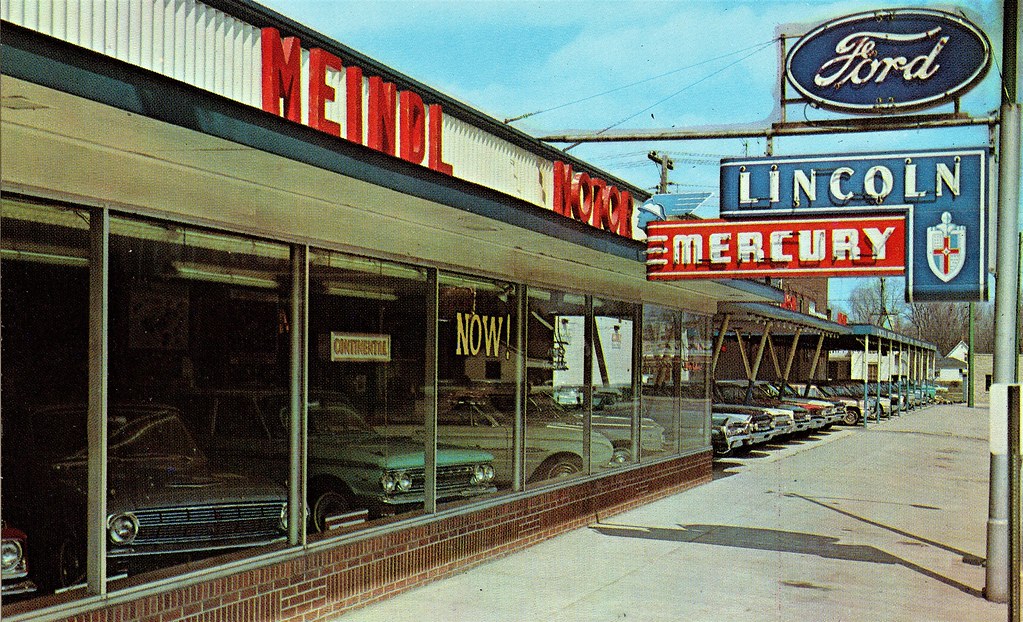
9. **Safety Features**: When the rubber meets the road on the topic of safety, both Ford and Mercury models from their respective eras exhibited commendable performance. The context states unequivocally that “both models have superb performance in terms of safety,” indicating a shared commitment to occupant protection within the manufacturing standards of the time. However, a key distinction emerged in the standardization of certain safety technologies, reflecting their differing market positions and pricing strategies.
Notably, it was often the case that “some optional safety systems on Fords were standard on Mercurys.” This wasn’t merely a minor detail; it was a deliberate strategy that underscored Mercury’s premium aspirations. Given that “Mercurys are more expensive than Ford and are expected to come with more features,” the inclusion of advanced or additional safety systems as standard equipment was a way to enhance their luxury appeal and provide greater perceived value to their more affluent customer base, offering a more comprehensive safety package right off the dealership lot.
While the article’s primary focus is on classic muscle cars, it’s also worth acknowledging Ford’s continuous evolution in safety. The brand “has become safer in recent years, thanks to the new Co-Pilot 360 safety suite.” This ongoing innovation demonstrates Ford’s enduring commitment to leading in automotive safety, a philosophy that, while manifesting differently in the muscle car era, laid the groundwork for future advancements. For the classic collector, understanding these historical differences helps appreciate the distinct approaches to safety that each brand took within the Ford Motor Company family.
Read more about: AMG Reinvented: Exploring the 2025 Mercedes-AMG GLC63 S E Performance
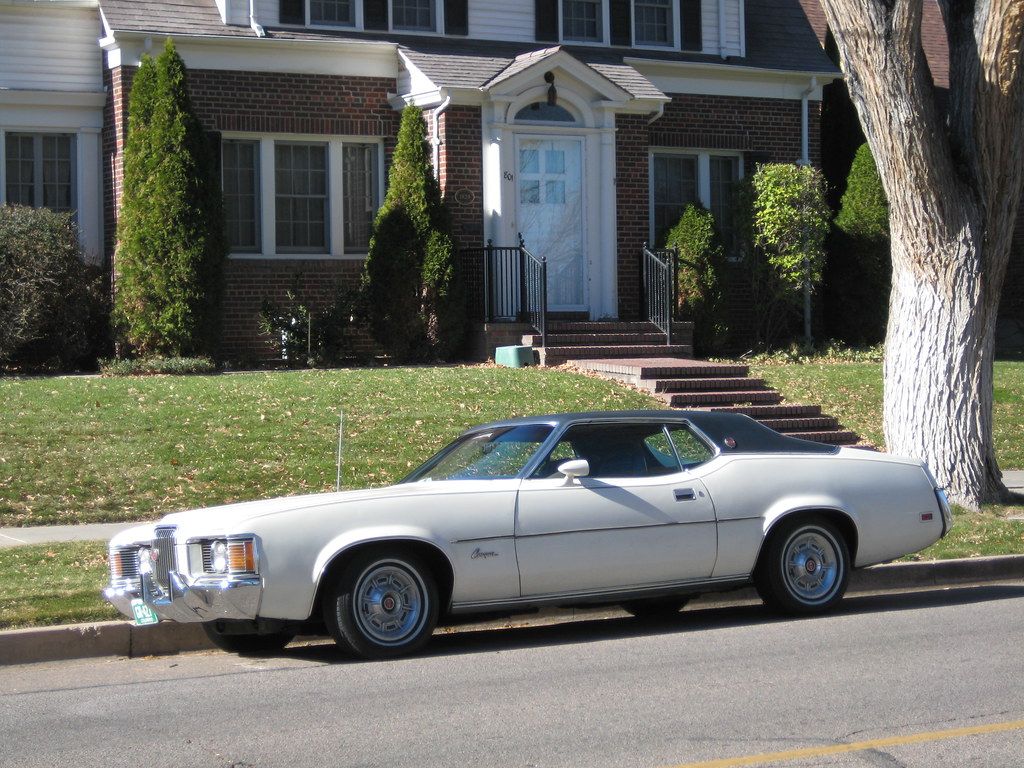
10. **Used Car Market Dynamics**: The initial price disparity between new Ford and Mercury vehicles naturally extended into the used car market, influencing their resale dynamics for decades. Historically, as Mercury vehicles “cost more from the dealership,” they also tended to “cost more on the used-car market.” Conversely, Fords, being “mass-market, low-priced models,” typically commanded “sensible resale prices,” making them a more accessible and often more practical choice for budget-conscious buyers seeking pre-owned vehicles from the muscle car era.
However, the landscape of the used car market for these two brands has undergone significant shifts, particularly after Mercury’s discontinuation. The context highlights that “the price distinction between used Fords and Mercurys is slowly blurring.” This notable change can be attributed directly to Mercury’s demise in 2010. The cessation of production meant that the brand’s perceived value on the secondary market “took a hit, reducing their prices,” bringing them closer to, or in some cases even below, comparable Ford models as they transitioned into pure collector status rather than everyday used vehicles.
Despite this recent convergence in some pricing aspects, the overarching wisdom still suggests that “a used Ford is cheaper to maintain and is a better bargain.” This enduring advantage stems from Ford’s mass-market appeal, higher production volumes, and generally lower maintenance costs, making parts more readily available and service more affordable. For muscle car enthusiasts navigating the vintage market, a Ford often represents a more financially manageable and consistently reliable investment, even if a rare Mercury might offer a unique sense of exclusivity.
In conclusion, the journey through the distinct worlds of Ford and Mercury classic muscle cars reveals much more than shared engineering and a common parent company. It’s a tale of two philosophies: Ford, the enduring champion of the working class, delivering dependable, affordable power, and Mercury, the refined purveyor of prestige, offering comfort and status alongside exhilarating performance. Each brand carved its own indelible mark on the golden age of American horsepower.
Read more about: Beyond the Hype: Dissecting EV Battery Longevity and Performance in the Real World
Whether you prioritize a vehicle that can withstand years of rigorous daily use and remain in excellent condition, making a Ford your ideal choice, or if you prize comfort and convenience above all, gravitating towards a Mercury, the decision ultimately rests on your personal values. Just remember, as history clearly illustrates, those “extra creature comforts will cost you more,” both initially and throughout the life of your cherished classic. Both brands offered incredible machines, but their true differences extended far beyond their badges, shaping their legacies in profound and captivating ways.



